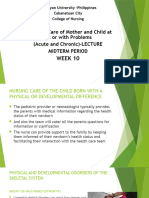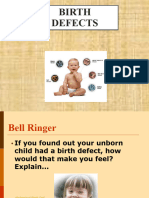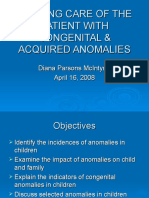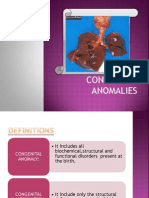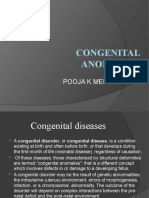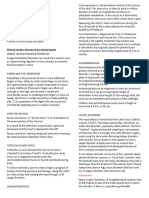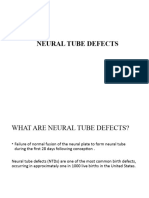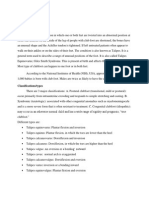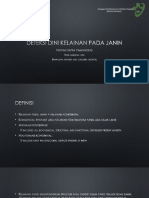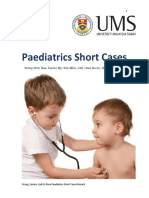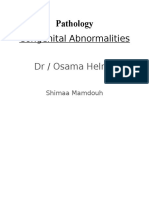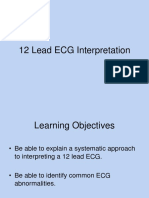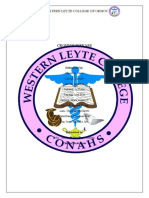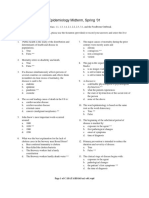0% found this document useful (0 votes)
10 views5 pages208 Lecture Notes
The document discusses various congenital anomalies, including congenital clubfoot, heart defects, and limb deficiencies, highlighting their prevalence, etiology, diagnosis, and medical interventions. It emphasizes the impact of these conditions on physical and developmental abilities, as well as the importance of early detection and treatment methods such as the Ponseti Method for clubfoot and surgical interventions for heart defects. Additionally, it outlines the role of genetic factors, environmental influences, and associated syndromes in the development of these anomalies.
Uploaded by
denkd97Copyright
© © All Rights Reserved
We take content rights seriously. If you suspect this is your content, claim it here.
Available Formats
Download as PDF, TXT or read online on Scribd
0% found this document useful (0 votes)
10 views5 pages208 Lecture Notes
The document discusses various congenital anomalies, including congenital clubfoot, heart defects, and limb deficiencies, highlighting their prevalence, etiology, diagnosis, and medical interventions. It emphasizes the impact of these conditions on physical and developmental abilities, as well as the importance of early detection and treatment methods such as the Ponseti Method for clubfoot and surgical interventions for heart defects. Additionally, it outlines the role of genetic factors, environmental influences, and associated syndromes in the development of these anomalies.
Uploaded by
denkd97Copyright
© © All Rights Reserved
We take content rights seriously. If you suspect this is your content, claim it here.
Available Formats
Download as PDF, TXT or read online on Scribd
/ 5





